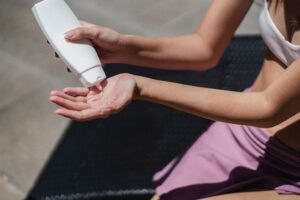Protect Your Skin

When it comes to skincare, sun protection should be at the top of your list. Not only does exposure to the sun’s UV rays cause premature aging, but it can also increase your risk of skin cancer. That’s why it’s so important to wear sunscreen every day, even when it’s cloudy or you’re spending most of your time indoors. And if you’re looking for a sunscreen that’s effective and easy to wear, you can’t go wrong with K-Beauty sunscreens.
1. What Makes K-Beauty Sunscreens Unique?
K-Beauty sunscreens are different from traditional sunscreens in a number of ways. For starters, they’re designed to be lightweight and non-greasy, which means they won’t leave a heavy residue on your skin. Instead, they absorb quickly and easily, leaving your skin feeling soft and smooth. Plus, many K-Beauty sunscreens contain ingredients like hyaluronic acid and niacinamide, which help to hydrate and brighten the skin while providing sun protection.
2. Choosing the Right SPF for Your Skin Type
When it comes to choosing the right SPF for your skin type, there are a few things to consider. If you have fair skin that burns easily, you’ll want to opt for a higher SPF, like 50+. On the other hand, if you have darker skin that rarely burns, you may be able to get away with a lower SPF, like 30. Additionally, if you have oily or acne-prone skin, you may want to look for a sunscreen that’s specifically designed for your skin type, as some sunscreens can cause breakouts.
3. Types of K-Beauty Sunscreens
K-Beauty sunscreens come in a variety of formulations, so you can choose the one that works best for your skin type and lifestyle. Some popular types of K-Beauty sunscreens include:
- Chemical sunscreens: These sunscreens use chemical ingredients to absorb the sun’s UV rays and convert them into heat, which is then released from the skin. Chemical sunscreens are often preferred by those with oily skin, as they tend to be less greasy than physical sunscreens.
- Physical sunscreens: These sunscreens use minerals like zinc oxide and titanium dioxide to create a physical barrier between the skin and the sun’s rays. Physical sunscreens are often preferred by those with sensitive skin, as they’re less likely to cause irritation.
- BB cream sunscreens: These multitasking products combine sun protection with skincare and makeup benefits. BB cream sunscreens can be a great choice for those who want to streamline their routine and save time.
4. How to Incorporate Sunscreen into Your Skincare Routine
Incorporating sunscreen into your skincare routine is easy, but it’s important to do it correctly in order to get the most benefits. Here’s how to do it:
- Cleanse your skin: Start by cleansing your skin with a gentle cleanser.
- Apply any serums or treatments: If you use any serums or treatments, apply them after cleansing and before sunscreen.
- Apply sunscreen: Apply sunscreen liberally to your face and neck, making sure to cover all exposed skin.
- Reapply as needed: If you’re spending time outdoors or sweating, be sure to reapply your sunscreen every two hours.
5. Stylish Sun Protection: K-Beauty Sunscreens for Every Occasion
When selecting a K-beauty sunscreen, it is important to choose one that suits your skin type and lifestyle. For example, if you have oily skin, look for a lightweight, oil-free formula that won’t leave your skin feeling greasy. If you are an active person who spends a lot of time outdoors, look for a water-resistant sunscreen that can withstand sweat and water.
It is also important to choose a sunscreen that offers broad-spectrum protection, meaning it protects against both UVA and UVB rays. UVA rays are responsible for premature aging and can penetrate through windows, while UVB rays cause sunburns and can be blocked by glass.

